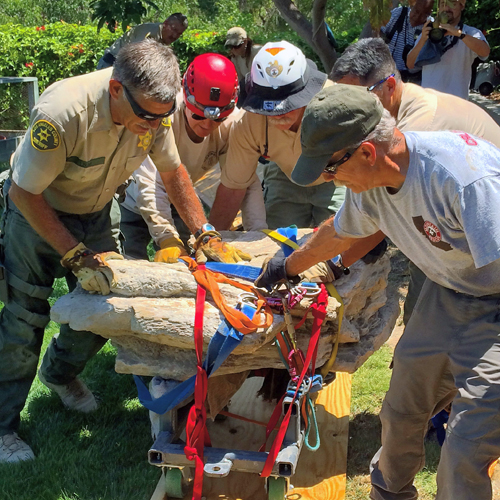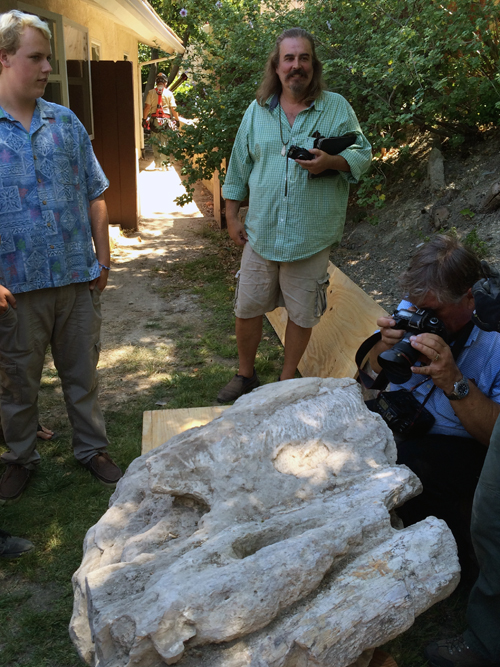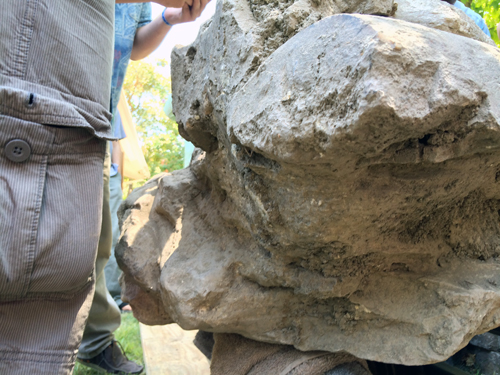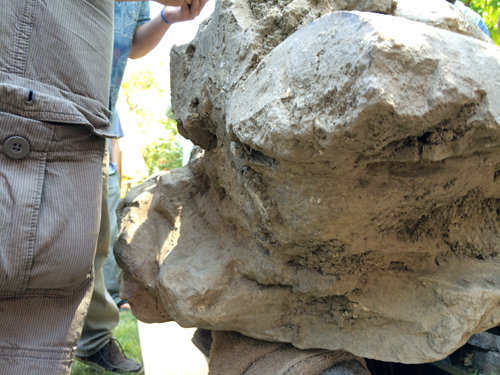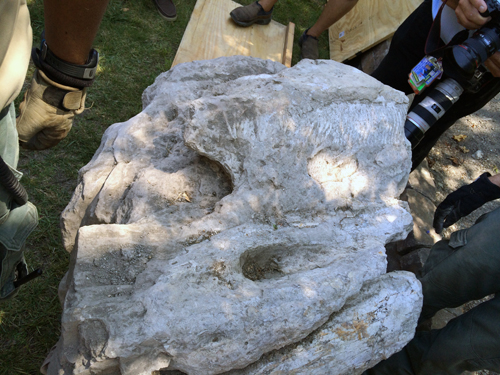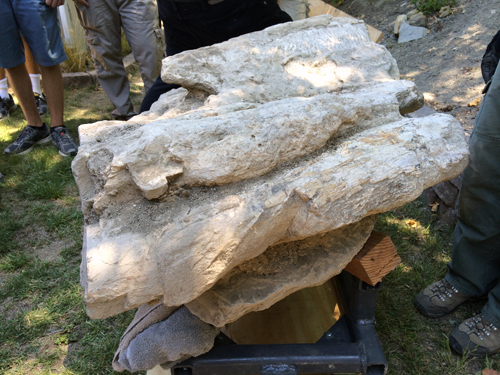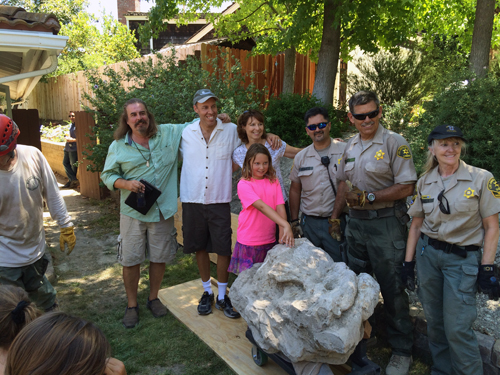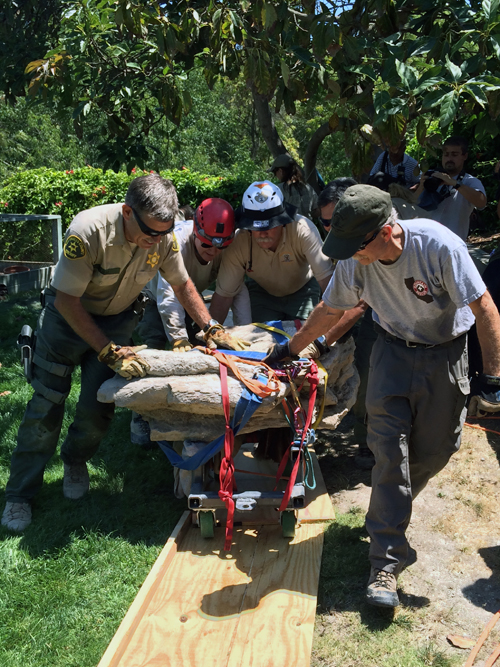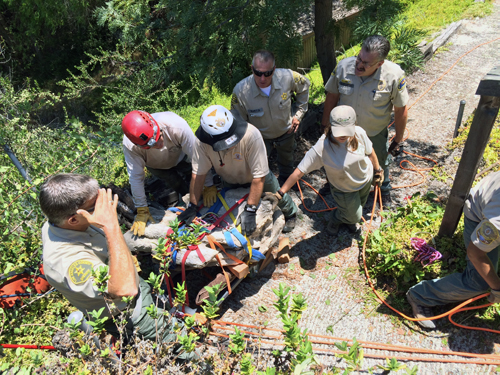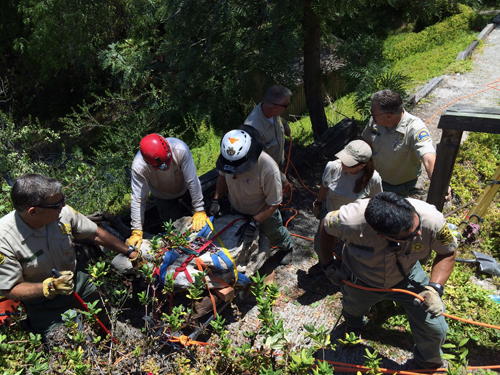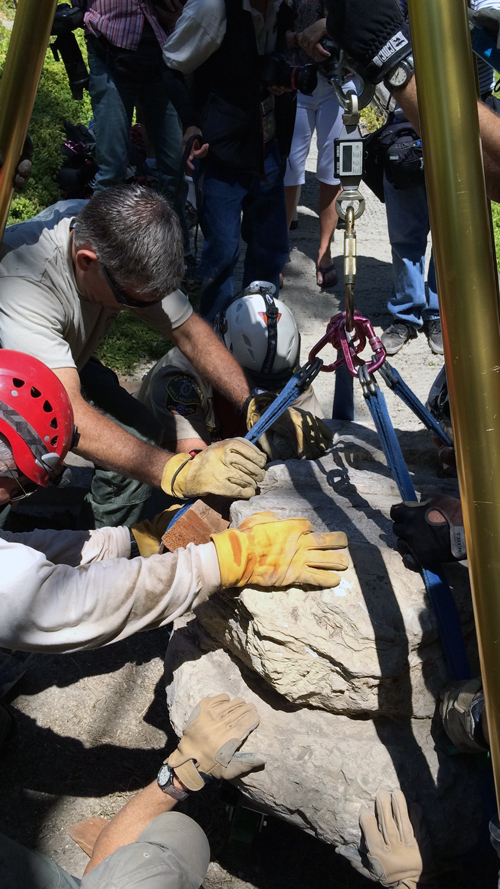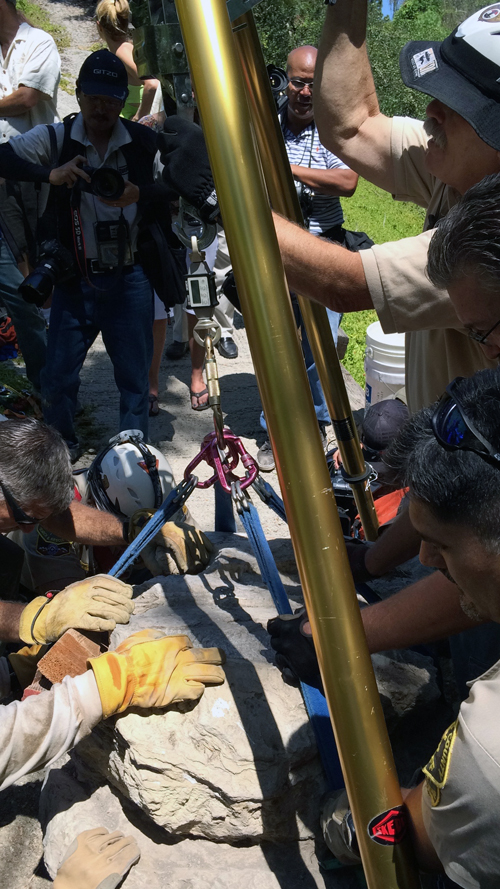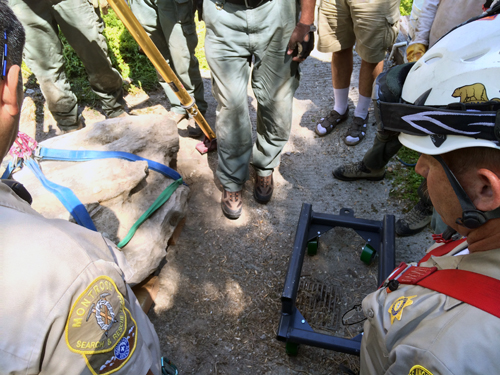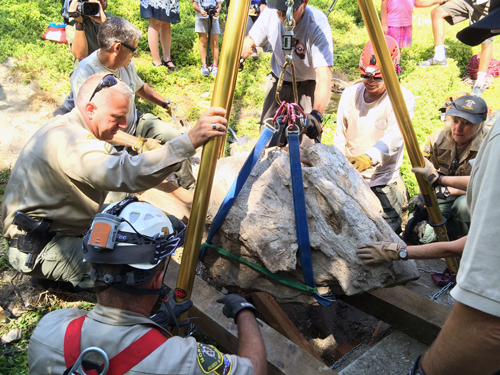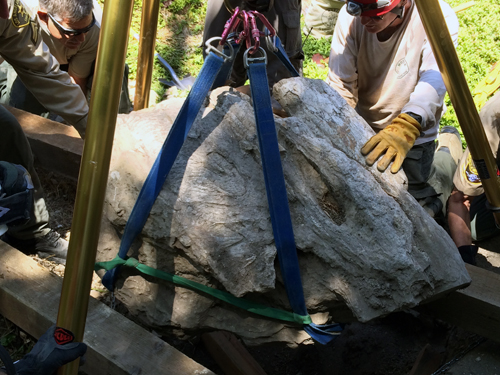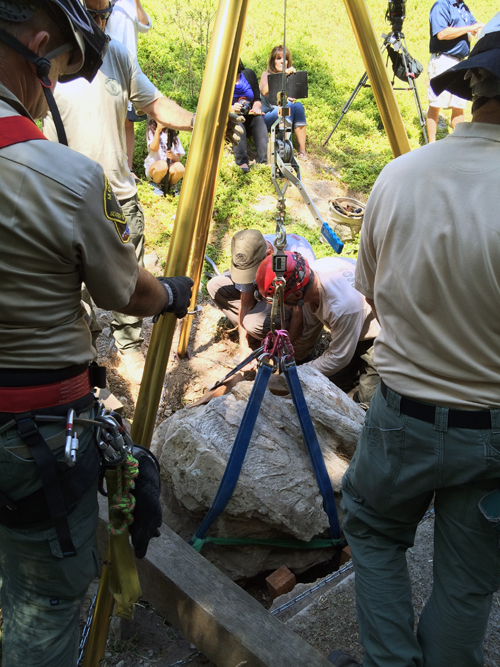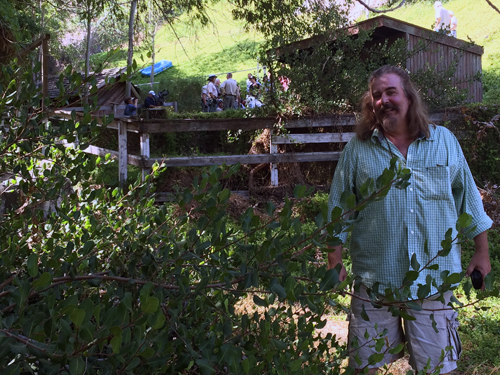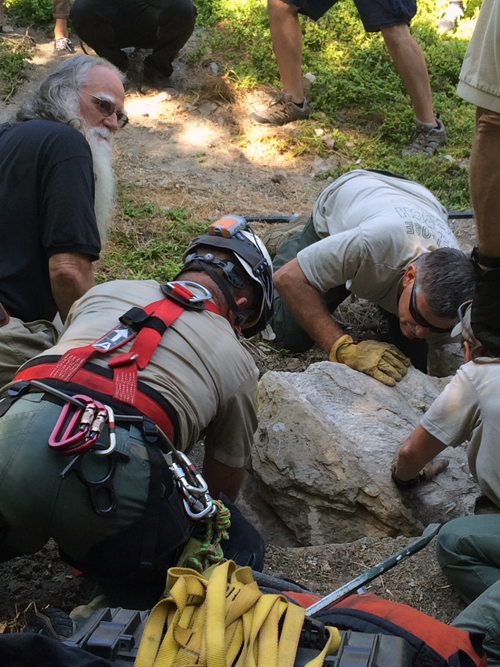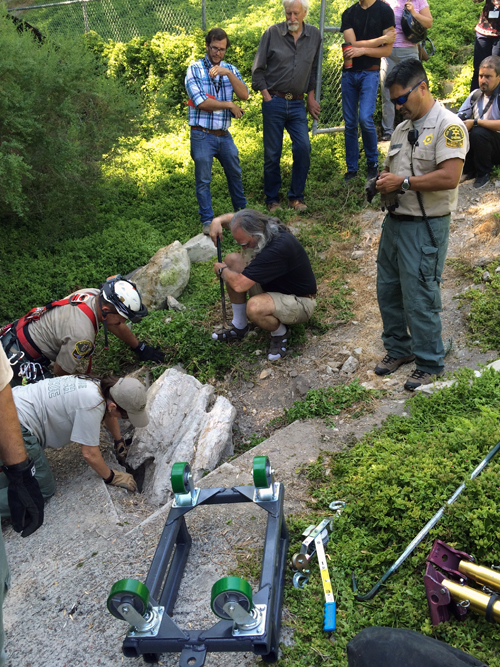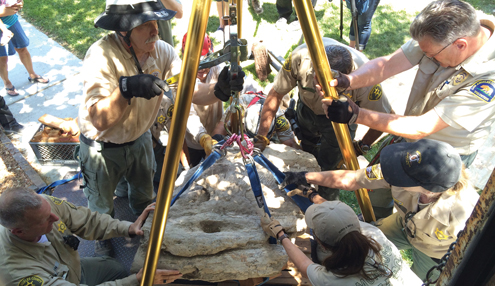
Members of the Montrose Search and Rescue team surround the fossil of the baleen whale gently lifting it with the Arizona Vortex.
The expertise of the local rescue team was called upon for a remarkable extraction millions of years in the making.
By Charly SHELTON
Last Friday, the Montrose Search and Rescue team handled a rescue in a canyon in Palos Verdes that was unlike anything members had ever attempted.
“The victim was very compliant, which was nice,” said Mike Leum, member of the MSR team. “No complaints whatsoever in how she was handled or treated, so it was all good.”
It was a first for the team because they have never rescued “anybody quite this old,” said Leum.
By old, he meant approximately 14 million years.
It was a fossil of a baleen whale the team was tasked with recovering from the deep canyon backyard of Palos Verdes resident Gary Johnson.
“I found this thing, about 200 yards away from where it is now, in 1978 when I was a junior in high school,” Johnson recalled. “I was looking for fossils and I noticed a bit of what I thought was bone sticking out of this large rock. I noticed the pattern in it, but I thought that it was sediment or a fish.”
The pattern, as it turned out, was fossil baleen. Baleen plates in a whale’s mouth are used to filter feed in the water, catching krill between the plates like a strainer. Fossil baleen is incredibly rare because it is made of the same structural protein as fingernails fingernails and hair – keratin. Usually soft tissues such as these do not last into the fossil record. They are either broken down as the body decays or are removed when scavengers consume the body, and, therefore are not around long enough for the permineralization process to take place. The permineralization process converts the organic tissue of the organism to stone by replacing the individual cells with minerals.
The fossil baleen discovered in Palos Verdes, with blood vessels preserved as well, was a rare and delicate find.
“Fossil baleen is extremely rare,” said Howell W. Thomas, senior paleontological preparator, Vertebrate Paleontology at the Natural History Museum of Los Angeles. “We probably have a couple dozen examples in the whole world. So any time we can find fossil baleen, we get it to the museum – it’s a significant fossil.”
The Natural History Museum of Los Angeles has “five or six specimens” said Thomas. “We have some on exhibit now, but this probably won’t go on exhibit; it will strictly be a research specimen.”
The research collection is huge, he said, adding that what the public sees in the museum on display is only a very small fraction of the museum’s overall collection. The majority is housed and kept for research purposes for scholars who want to come and work with specimens like the fossil baleen.
“We have a few baleen whale fossils, skulls and bones, that nobody has ever described. So is this one of those? Is this something new? We won’t know until somebody gets in and starts describing the fossils,” said Thomas.
But before the research could begin, it had to be taken out of the ground.
After sitting in the same spot for 36 years, it was up to the MSR team to get the fossil up the long incline from the canyon, through a neighboring yard and to the waiting truck on the street. Using several straps to secure the fossil boulder, the entire 996 pound specimen was lifted using a tripod called the Arizona Vortex and moved just a few inches. After three very deliberate and delicate lifts, it was finally placed on a specially designed trolley cart, the FRV – Fossil Recovery Vehicle. The FRV was then tied to a pulley system using anchors in the neighboring yard and pulled up the steep hill by the members of the MSR team. Once at the top of the hill, the team changed directions and pulled it up a second, less steep grade to the neighboring yard that was, thankfully for the team, flat. Then the specimen was rolled on a plywood track to the truck where the Arizona Vortex once again transferred the fossil from the FRV onto a wooden pallet for transport to the museum. Once at the museum, the pallet was moved by forklift.
“I want to take my grandkids down there in about 15 years and tell them, ‘Your grandpa is so old, he helped recover that fossil,’” said Leum. “It was a lot of fun, great to work with the Natural History Museum.”
